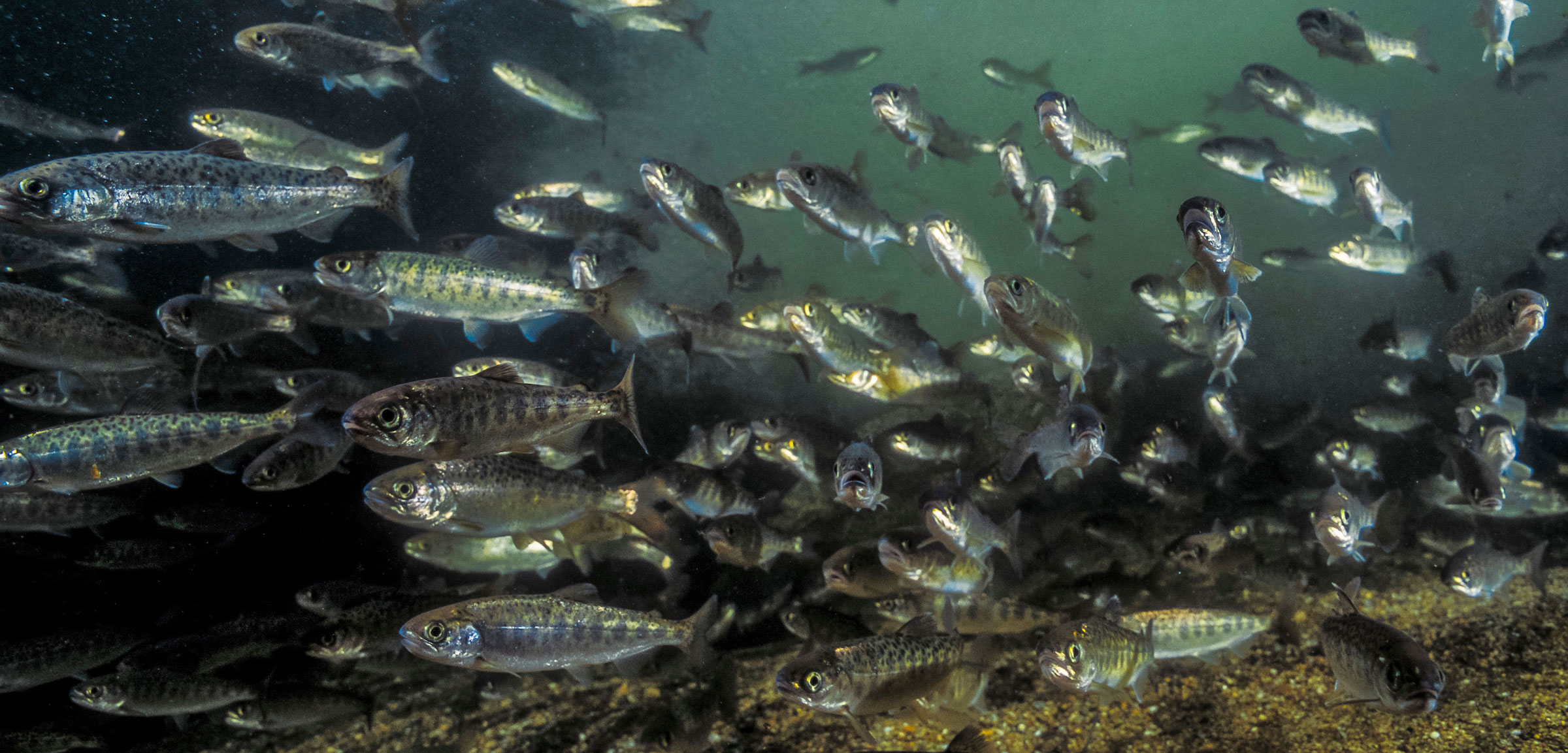Salmon Subsidies Get Tossed Aside
New research suggests carcass subsidies are not a long-term solution to Pacific salmon population declines.
Article body copy
It’s a wet January morning in 2020, and a forklift is hoisting a 900-kilogram block of frozen salmon overhead. With a crash, the mass of fish smashes onto the pavement. The carcasses scatter, and workers at the Clear Creek Hatchery in Olympia, Washington, set about piling them into a bin. These chinook are destined for the Nisqually River watershed, about an hour south of Seattle, Washington, where rain gear–clad schoolkids will toss the slippery, smelly fish into the Mashel River—a gruesome field trip activity with an ecological purpose.
Pacific salmon die soon after they spawn. Their bodies decompose, delivering a pulse of food and fertilizer to the river ecosystem. But as salmon populations have declined along the west coasts of the United States and Canada, so have the numbers of nourishing carcasses. Since the 1990s, people have been mimicking this natural influx by tossing salmon carcasses into previously prosperous salmon rivers—a bid to revitalize these ecosystems. In the Nisqually River watershed, that task falls to groups of schoolkids and local volunteers, enlisted by the Nisqually River Education Project and the Nisqually Indian Tribe.
But a new study, the first to assess the long-term benefits of these salmon-tossing efforts, has found the activity less effective than hoped. Led by Joe Benjamin, an ecologist with the United States Geological Survey, researchers used a river food web model to measure how 20 years of adding salmon carcasses affects the biomass and abundance of algae and invertebrates, as well as juvenile and adult salmon and other fish species.
In the model, adding carcasses increases invertebrate and fish biomass and shifts their diets. Invertebrates eat less algae, and juvenile salmon and other fishes eat fewer invertebrates, in favor of consuming the carcasses. Young chinook grow larger faster, and more survive to adulthood. This leads to four times more adult chinook returning to the river to spawn.
However, Benjamin and his colleagues also tested what would happen should the carcass subsidies stop. They found that within 10 years, less than one percent of the simulated chinook populations still showed elevated adult returns. Chinook numbers were more likely to decline after carcass additions ceased, especially when carcasses were added at high densities. In the majority of simulations, populations returned to pre-subsidy levels.
“In the long term, these treatments are not very effective at keeping the salmon population up,” Benjamin says.
The boost in juvenile numbers that is achievable with nutrient subsidies, the study concludes, is more than counterbalanced by other factors—starvation, predation, difficult environmental conditions—that threaten salmon survival in rivers and the ocean.
For those considering implementing these projects to recover salmon populations, the finding is a deterrent.
Allison Dennert, an ecology doctoral candidate at Simon Fraser University in British Columbia who was not involved with the study, says that while augmenting juvenile survival is a positive outcome of nutrient subsidy efforts, these programs manipulate only a small part of the salmon life cycle. Threats to their other life stages will need to be addressed to see a long-term increase in salmon populations.
“We need to really consider a complement of management interventions,” Dennert says. “No single action is going to be able to overcome all of the things that salmon are going through.”
While tossing carcasses may not be a panacea, Matthew Kaylor, a fish ecologist at Oregon State University who works closely with the Columbia River Inter-Tribal Fish Commission, says the results suggest that nutrient subsidies could be used to buy time for populations on the brink.
In the Nisqually River, the goal was never to bring the chinook back with carcasses alone, explains Chris Ellings, the manager of the Nisqually Indian Tribe’s salmon recovery program. Annually, kids participating in the education program toss about 2,000 carcasses—a far cry from the 20,000 chinook that once spawned in the upper Nisqually. Still, the program is incredibly powerful at connecting kids with science and the river, Ellings says.
Instead of relying on carcasses to recover chinook, Ellings and his team are restoring habitat throughout the watershed by removing dikes, constructing habitat for juvenile salmon, and planting native species to address some of the larger factors limiting fish’s chances of survival. Eventually, he expects the regenerated forests will naturally stabilize the riverbanks, attract insects for juvenile salmon to eat, help shade the water, and also supply the branches and logs that are integral to a healthy stream. With luck, the salmon will return—without the help of a forklift.

